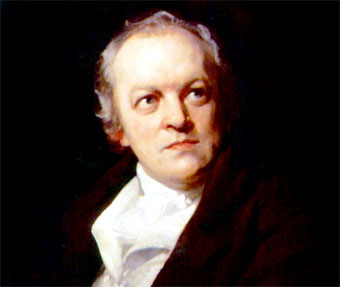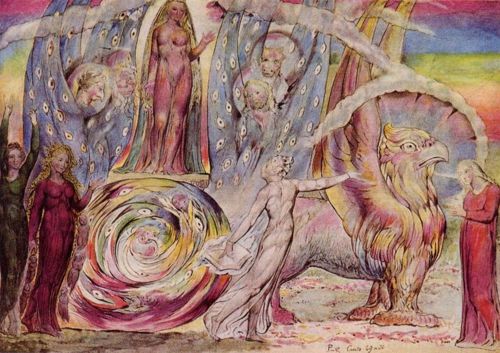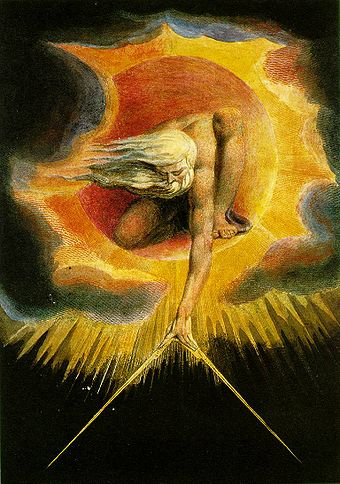William Blake
 From Conservapedia
From Conservapedia 
William Blake (1757-1827) was a British poet, painter, visionary mystic, and engraver, who illustrated and printed his own books. The best-known are the lyrical Songs of Innocence (1789) and Songs of Experience (1794) and his comments on established religion, The Marriage of Heaven and Hell and The Everlasting Gospel. His best-known work is the opening lines to his poem Milton, which were set to music by Parry, ironically titled "Jerusalem," and is one of the most popular English hymns. He illuminated his self-published writings, illustrated Dante and Chaucer, and painted singular oils such as The Ghost of a Flea.[1]
As described by the Encyclopedia Britannica, Blake witnessed the release of the soul of his beloved 24-year-old brother, Robert, who died from tuberculosis in 1787. Blake remained bedside for days with his ailing brother, and when he passed away Blake saw his “released spirit ascend heavenward through the matter-of-fact ceiling, ‘clapping its hands for joy,’” as recounted by Alexander Gilchrist.[2]
Blake also wrote and illustrated several long epic poems of his own invented mythology. These are some of the most strikingly original works in English literature and art. His work was so different from that of most poets of his time that it was mainly ignored during his lifetime.
Blake belonged to no particular poetic movement, but is now often felt to be one of the earliest and greatest figures of the Romantic movement which flourished in the first half of the nineteenth century. He proclaimed the supremacy of the imagination over the rationalism and materialism of the 18th century. He joined for a time the Swedenborgian Church of the New Jerusalem in London and considered Newtonian science to be a limitation on the human imagination. Misunderstanding shadowed his career as a writer and artist and it was left to later generations to recognize his importance. William Blake is far and away the greatest artist Britain has ever produced. The Guardian, UK. Ibidem
The imaginative character of his designs is the source of the deepest interest of his work; but the mere student of the art of engraving will find in his best plates, such as the Illustrations of the Book of Job, examples of technical skill, and of fine drawing, which prove not only admirable training of hand and eye, but give evidence of the integrity of his moral nature. The stroke of his graver is both vigorous and tender: it is always sure and steady, however delicate. Fanciful as his conceptions may be, they are rendered with a distinctness that leaves no question of the clearness of the vision from which they proceeded, or of his power to express them with definite outline.[3]
Blake was sometimes called mad because of his unusual views on religion and morality, and because he claimed that his work was inspired by visions. He lived in near-poverty most of his life, and when he died he was buried in a common grave.

Beatrice addressing Dante from the Car, ca. 1824–27.

The Ancient of Days, 1794.
,_PLATE_II,_1823.jpg) Inventions on the Book of Job (Illustrations of the Book of Job), PLATE II, 1823.
Inventions on the Book of Job (Illustrations of the Book of Job), PLATE II, 1823.
See also[edit]
- Polymath
- And Did those Feet
References[edit]
- ↑ [1]
- ↑ https://www.britannica.com/biography/William-Blake/Career-as-engraver
- ↑ [2]
External links[edit]
- William Blake Biography & Art Archive
- The William Blake Archive
Categories: [British Poets] [Artists] [English Painters]
↧ Download as ZWI file | Last modified: 02/24/2023 02:43:39 | 113 views
☰ Source: https://www.conservapedia.com/William_Blake | License: CC BY-SA 3.0
 ZWI signed:
ZWI signed: KSF
KSF